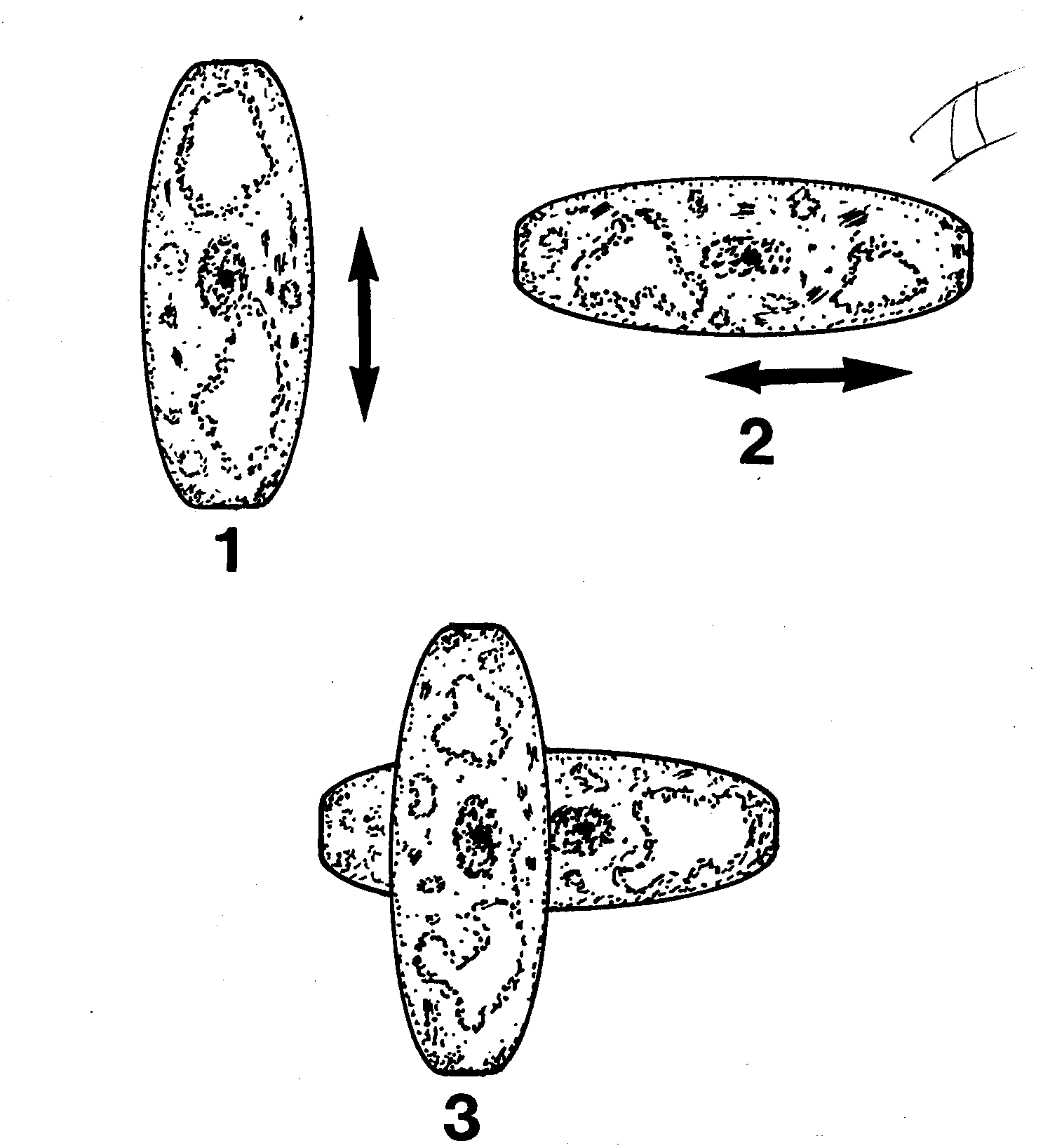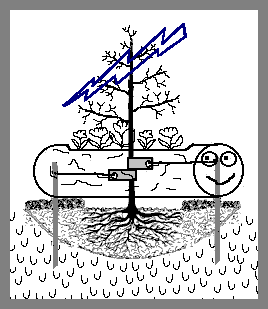 AXIAL AND RADIAL PARENCHYMA CELLS
AXIAL AND RADIAL PARENCHYMA CELLSParenchyma cells in the cambial zone have their long axis parallel to the trunk - Axial [1] – or perpendicular to the trunk – radial [2]. The cambial zone is made up of axial and radial cells [3]. Each mother cell divides to form two daughter cells. They mature to become two new mother cells that divide again. As cells divide and mature, and divide and mature, the cambial zone gets thicker. Then the cells on the outside and inner of the zone begin to differentiate. Differentiation marks the end of the division processes. The axial cells or fusiform initials differentiate to form vessels, fibers, or axial parenchyma in angiosperms; and tracheids, fiber tracheids, and axial parenchyma in conifers. The radial initials form radial parenchyma. The parenchyma, as living cells, still have the capacity to divide. However, they are locked in place by other cells, so division could occur but the cells would be half their size. When wounds break away wood cells, the still living parenchyma along with the still living cambial cells divide to form callus. In tropical trees a new bark may form over the surface of shallow wounds.
This is a reproduction of page 61 in the book Modern Arboriculture by Dr. Shigo.
Their website is www.shigoandtrees.com
 Dictionary
MAIN PAGE
Dictionary
MAIN PAGE